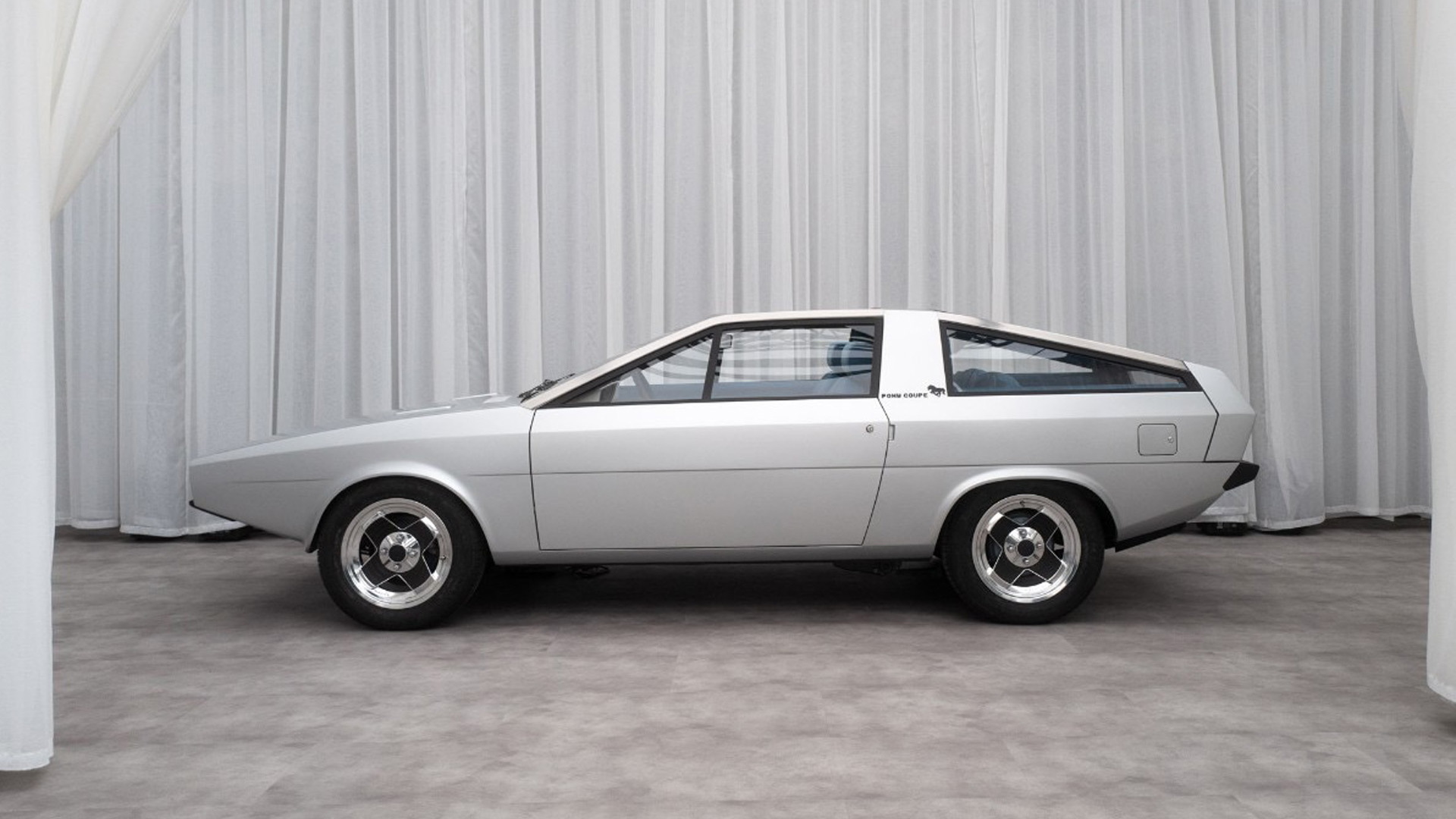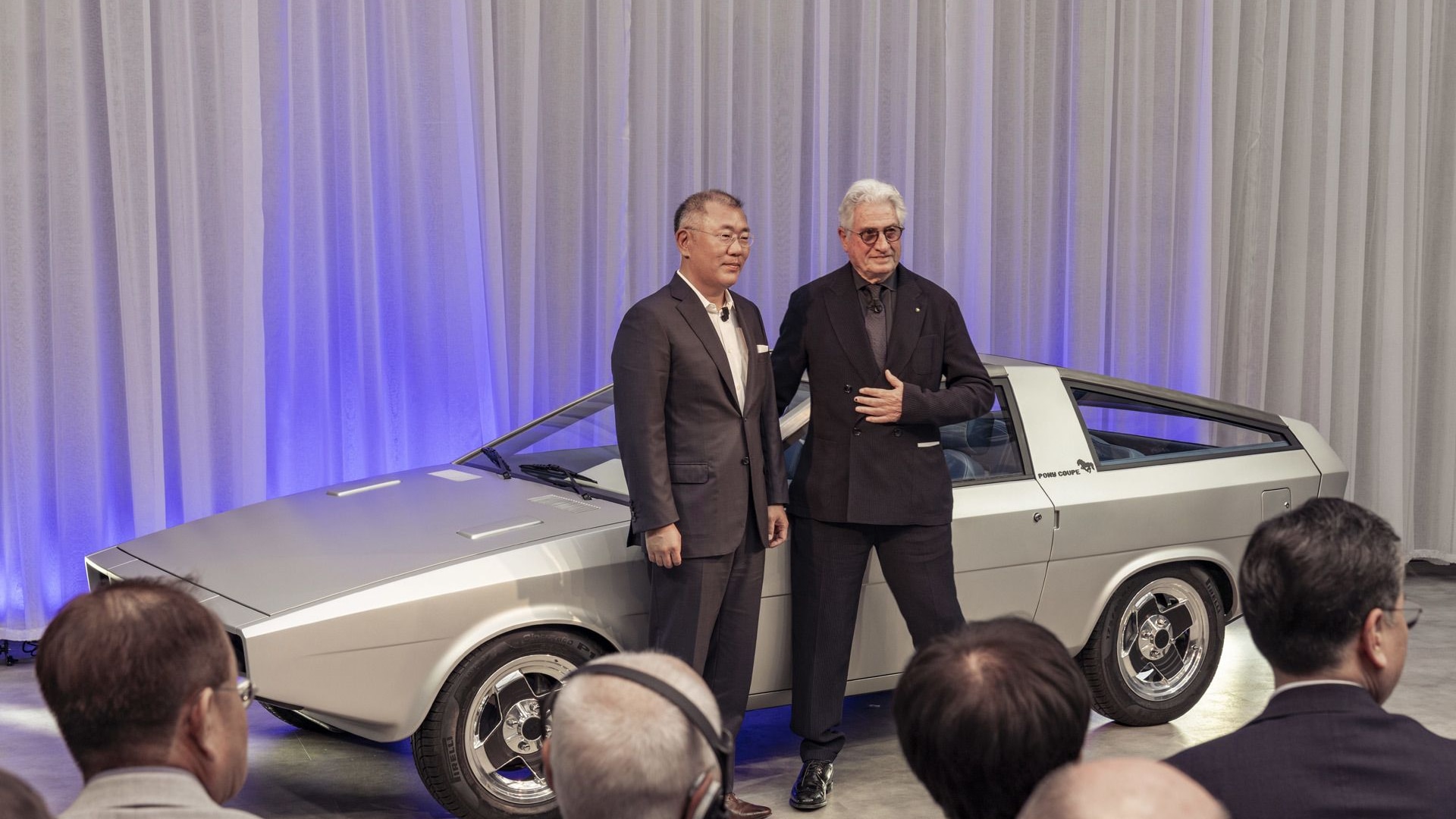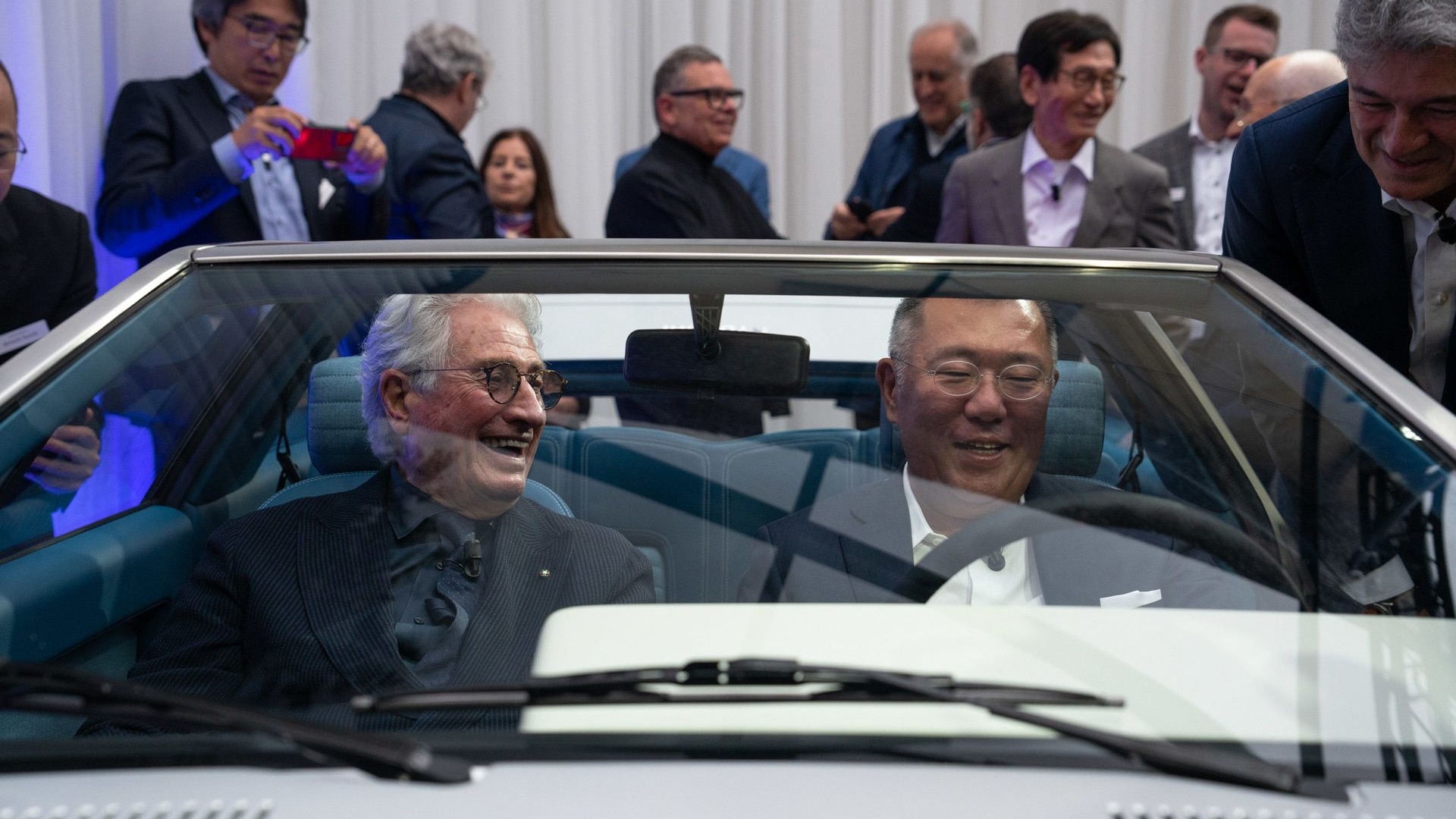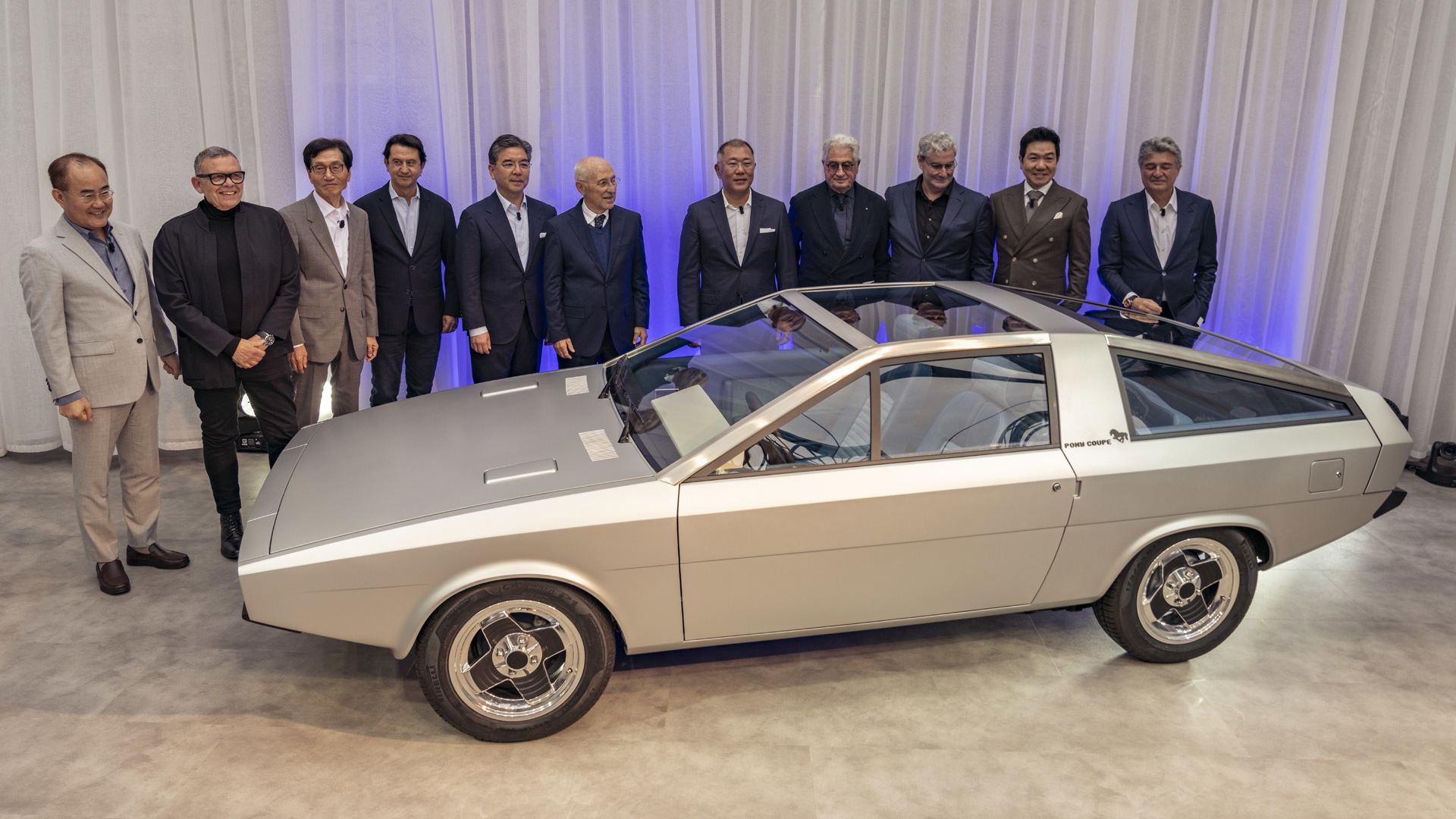Hyundai teamed up with legendary Italian designer Giorgetto Giugiaro to recreate the original Hyundai Pony Coupe Concept of 1974, an iconic show car designed by Giugiaro and which helped lay the groundwork for the arrival of the Pony sedan a year later, South Korea's first independently developed mass-produced car.
The concept was among five designs Giugiaro came up with for Hyundai in the early 1970s as part of a government challenge to develop a South Korean car in time for launch by 1975 (previously Korean automakers were building cars of foreign automakers).
While a sedan body style was chosen as the winner, a production version of the Pony Coupe Concept was due to follow but the project came to a stop in 1981 due to an economic downturn. The car's wedge-shape would live on in another Giugiaro design, however: the DeLorean DMC 12 that debuted in 1983.
Despite its significance, the original Pony Coupe Concept no longer exists. Hyundai hasn't said what actually happened to it, but the automaker has recreated it in preparation for next year's 50th anniversary of the original unveiling at the 1974 Turin auto show. The concept is powered by a 1.2-liter inline-4 rated at 82 hp. The engine is mounted longitudinally, and drive goes to the rear wheels via a manual transmission.
The recreation was unveiled on Thursday at the inaugural Hyundai Reunion, which took place at Italy's Lake Como. The event is described as a “heritage brand platform” that serves as a way to preserve Hyundai's spirit and values as the automaker transitions to a world of electric mobility.
Also present was Giugiaro and his son Fabrizio. The two Giugiaros, who worked on the recreation, today run the design firm GFG Style, which they started after selling their remaining shares in their previous design firm, Italdesign Giugiaro, to Volkswagen Group in 2015.
The collaboration between Hyundai and GFG Style could extend beyond the recreation of the Pony Coupe Concept, according to Luc Donckerwolke, Hyundai Motor Group's chief creative officer.
“Not only does this project hold historical value, but it also represents a cross-cultural exchange that could pave the way for more collaborations down the road,” he said when the project was first announced last fall.






